Mon., Jan. 22, 2007
The first Optional (Extra Credit) Homework
Assignment was handed out today. It will be due at the
beginning of class next Monday (Jan. 29). Optional
assignments
should be ready to be turned in when you come to class. Don't let
the instructor see you finishing an optional assignment or working with
a friend in the last few minutes before the start of class (he is
likely to take your unfinished assignment and that of your friend and
give you either partial credit or no credit at all).
The first 1S1P Assignment was also
made. Those reports are due in two weeks on Monday, Feb. 5.
A steel
bar was passed around class. You were supposed to guess
how much it weighed.
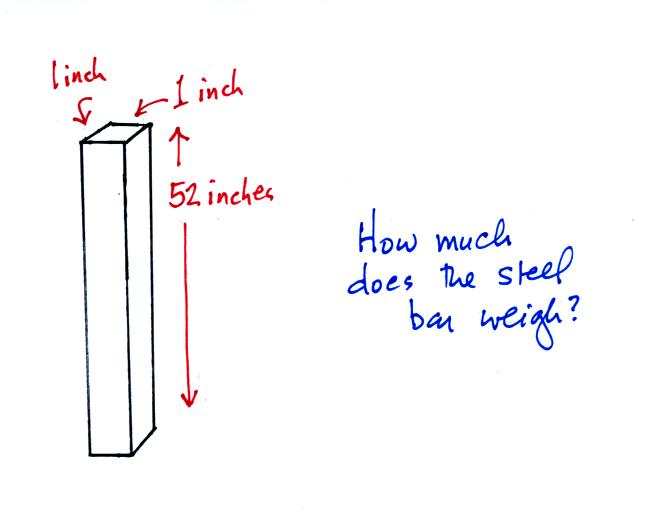
The answer to the question about the bar's weight will
relate
to something covered later in the class period today.

Before we can learn about atmospheric pressure, we
need to review
the terms mass and weight. In some textbooks you'll find mass
defined at the "amount of stuff." Other books will define mass as
inertia or as resistance to change in motion. The next picture
illustrates both these definitions. A Cadillac and a volkswagen
have both stalled in an intersection. Both cars are made of
steel. The Cadillac is larger and has more steel, more stuff,
more mass. The Cadillac is also much harder to get moving, it has
a larger inertia (it would also be harder to slow down if it were
already moving).
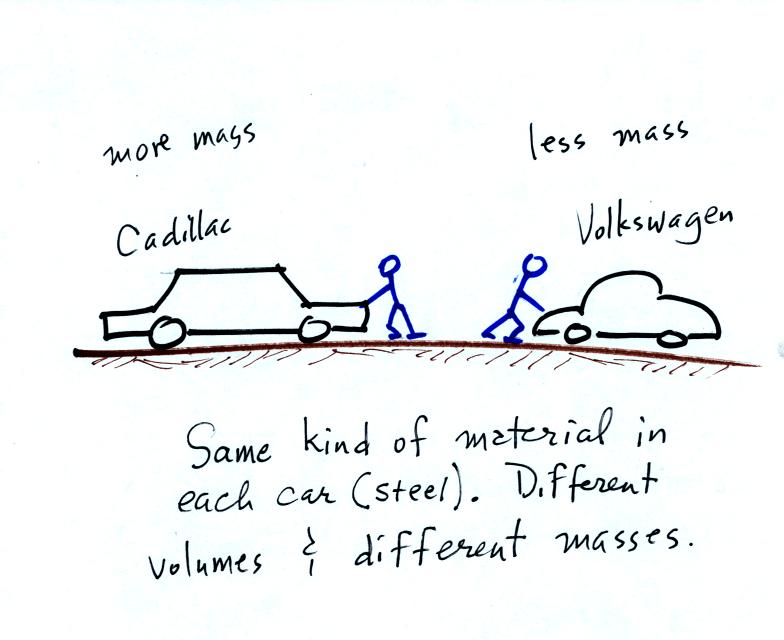
It is possible to have two objects with the same
volume but very
different masses. Here's an example:

Bottles containing equal volumes of water and mercury were
passed around in class (thanks for being careful with the bottles of
mercury). The bottle of mercury was quite a bit heavier than the
bottle of water.

Weight is a force and depends on both the mass of an object and the
strength of gravity.
We tend to use weight and mass interchangeably
because we spend all our
lives on earth where gravity never changes.
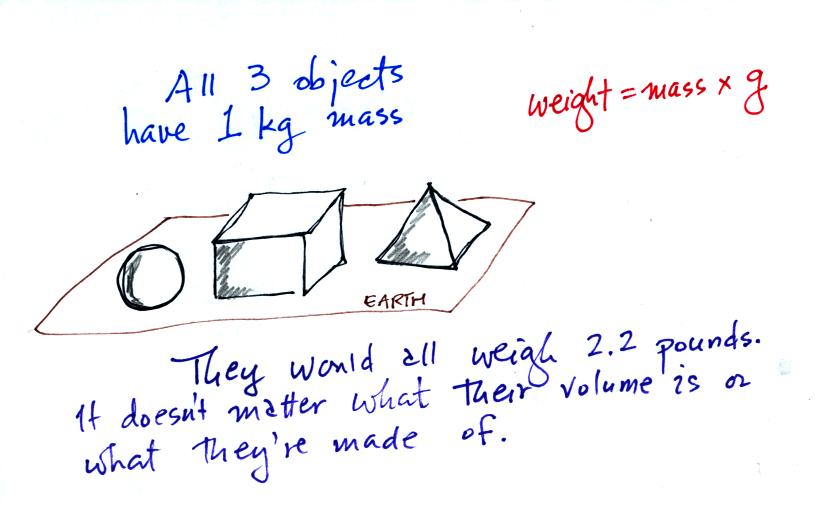
Any three objects that all have the same mass would
necessarily have the same weight. Conversely
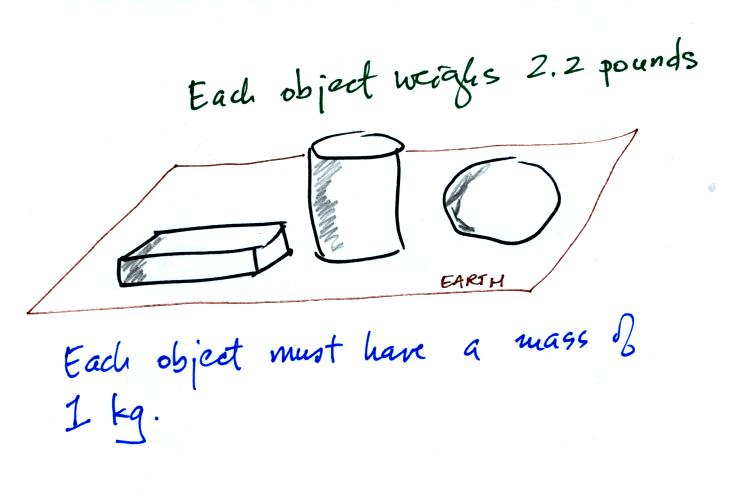
Three objects with the same weight would have the same mass.
The difference between mass and weight is clearer (perhaps) if you
compare the situation on the earth and on the moon.
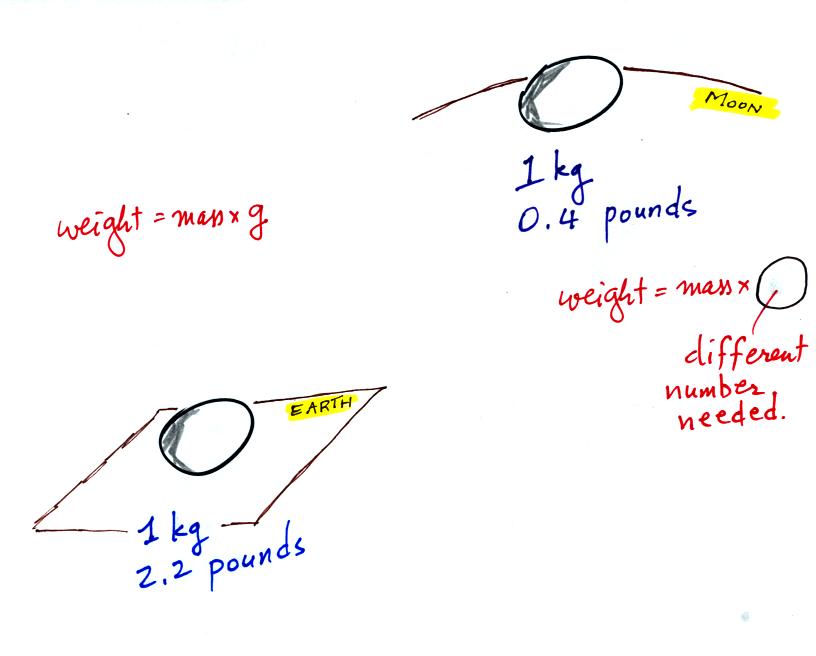
If you carry an object from the earth to the moon, the mass
remains the
same (its the same object, the same amount of stuff) but the weight
changes because gravity on the moon is weaker than on the earth.
Here's a little detour we took concerning values and units of weight of
someone on the earth and on the moon.
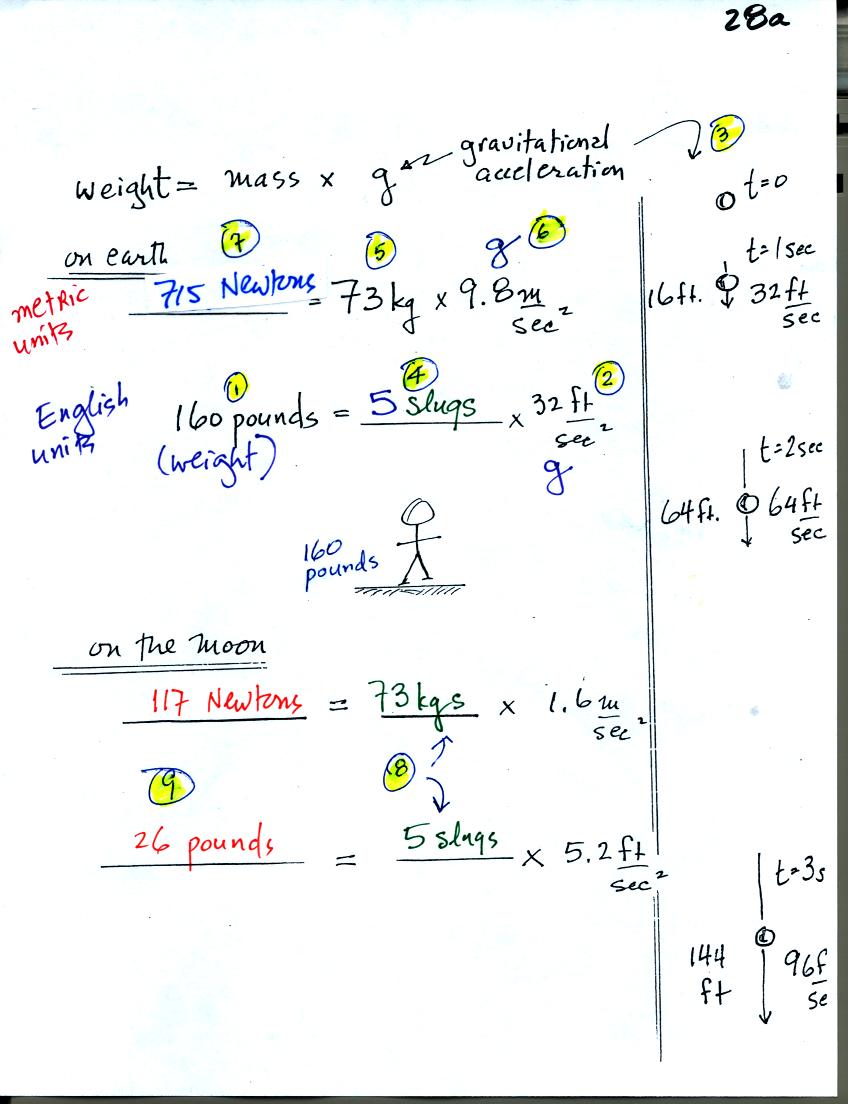
(1) The course instructor weighs about 160 pounds (after putting on a
little weight over the winter). In (2) we see that the
gravitational acceleration is 32 ft/sec2 in English units. The
meaning of this value is shown in (3). Gravity will cause a
falling object to fall 32 ft/sec faster with every second it continues
to fall. Dividing the instructor's weight by the gravitation
acceleration in (4) we obtain the instructor's mass, 5 slugs, in
English units.
In metric units, the instructor has a mass of 73 kilograms (5).
The gravitation acceleration is 9.8 m/sec (6). Multiplying these
two values, in (7), we find that the instructor weigh 715 Newtons.
On the moon, the mass stays the same. Gravity is weaker, so the
value of g is smaller. The instructor would weigh quite a bit
less (117 Newtons or 26 pounds) on the moon compared to the earth.
Now
back to the bottles of water and mercury.
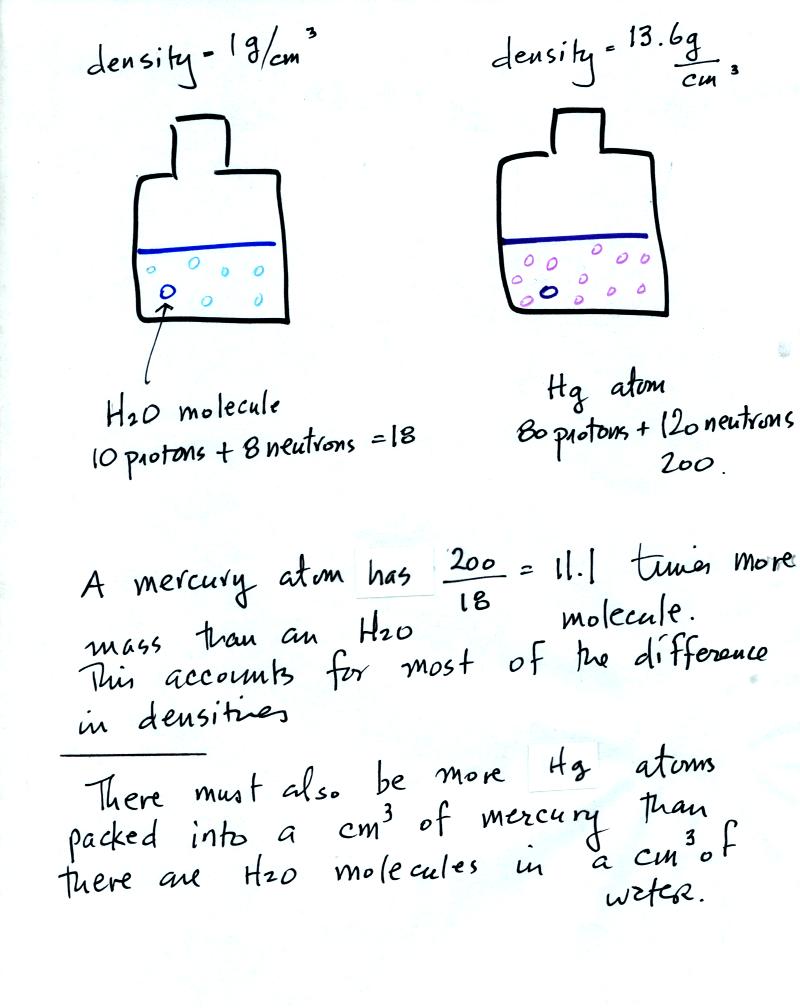
Mercury atoms are built up of many more protons and neutrons
than a water molecule (also more electrons but they don't have nearly
as much mass as protons and neutrons). The mercury atoms have
11.1 times as much mass as the water molecule. This doesn't quite
account for the 13.6 difference in density. Despite the fact that
they contain more protons and neutrons, the mercury atoms must also be
packed closer together than the molecules in water.

Definition and illustrations of high and low density.
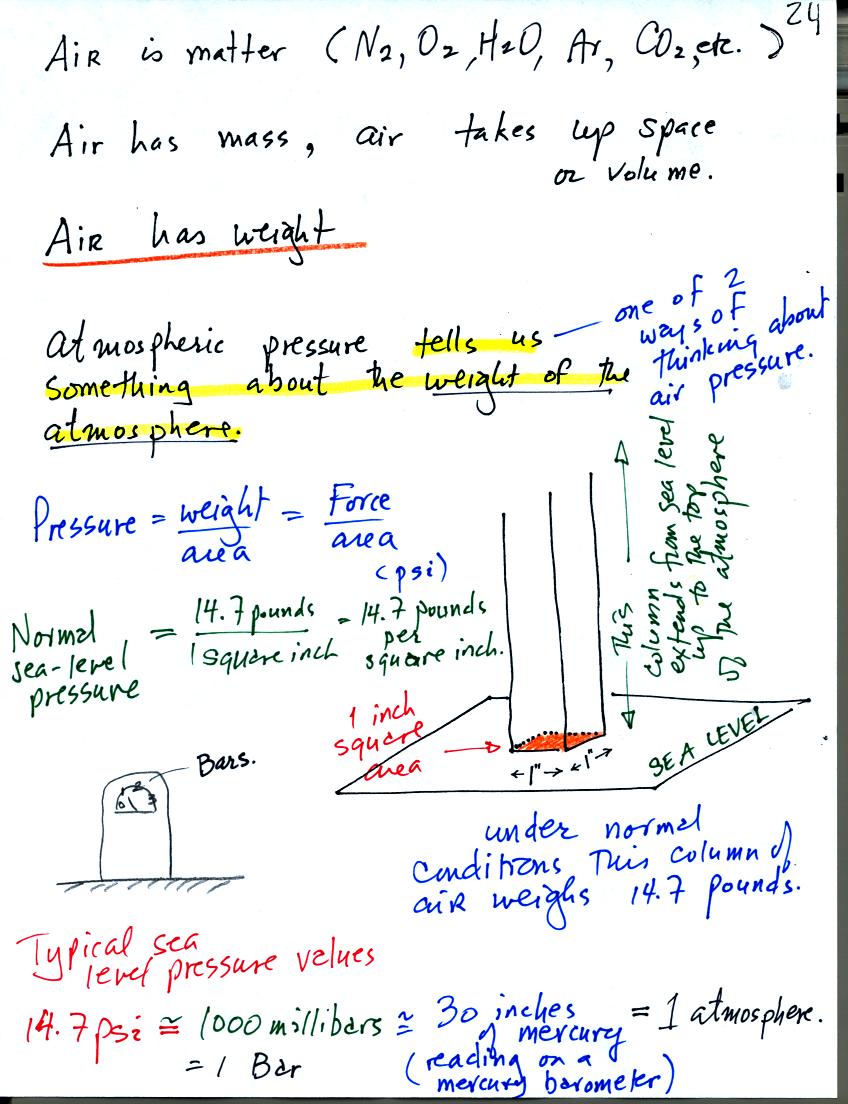
This ended up being a very busy figure. Basically the air
that
surrounds the earth has mass. Gravity pulls downward on the
atmosphere giving it weight. Galileo proved that air has weight using
the following
demonstration.
Pressure is defined as force divided by area; in this case the weight
of the atmosphere divided by area. Atmospheric pressure is
determined by and tells you something about the weight of the air
overhead.
Under normal conditions a 1 inch by 1 inch column of air stretching
from sea level to the top of the atmosphere will weigh 14.7 pounds (the
same as the steel bar passed around in class). Normal
atmospheric
pressure at sea level
is 14.7 pounds per square inch (psi, the units you use when you fill up
your car or bike tires with air).
We will mostly use millibar (mb) units in our course.
Standard
atmospheric
pressure is about 1000 mb or 30 inches of mercury. The second
value refers to the reading from a mercury barometer. 1000
millibars is also equal to 1 bar or 1 atmosphere.
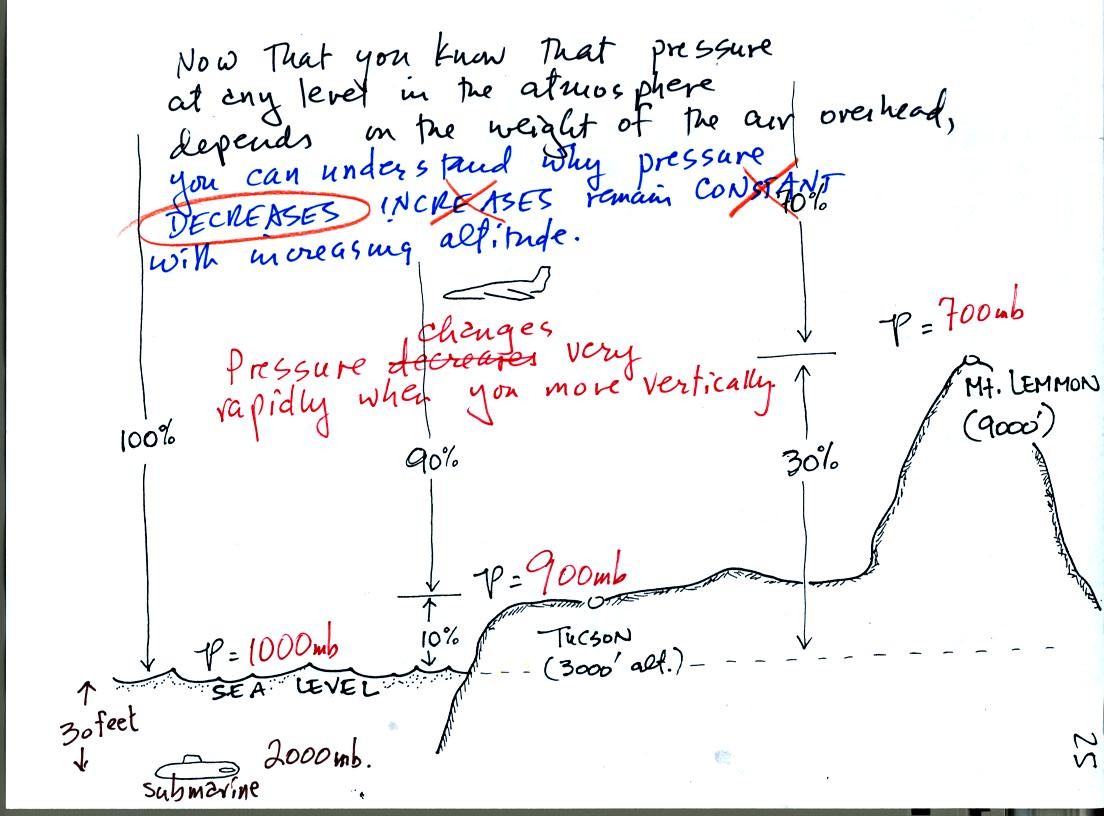
As you move upward through the atmosphere there is less and
less air
left overhead. The pressure at any level in the atmosphere is
determined by the weight of the air remaining overhead. Thus pressure
decreases with increasing altitude. Pressure changes much more
quickly when you move in a vertical direction than it does when you
move horizontally. This will be important when we cover surface
weather maps. Meterologists attempt to map out small horizontal
changes or differences in pressure on weather maps. These small
changes are what cause the wind to blow and produce weather.
Pressure increases rapidly as you descend into the
ocean. The
pressure at some level in the ocean is determined by the atmospheric
pressure plus the pressure produced by the weight of the water above
you. Water is much denser than air, so the extra weight builds up
quickly. The submarine in the lower
left hand corner of the figure above would experience a pressure of
2000
mb at 30 feet in the ocean, twice what it would feel at the surface of
the ocean. Only 30 feet of water has produced the same pressure
as the entire atmosphere.
The
following discussion of Newton's Law of Universal Gravitation wasn't
covered in class.
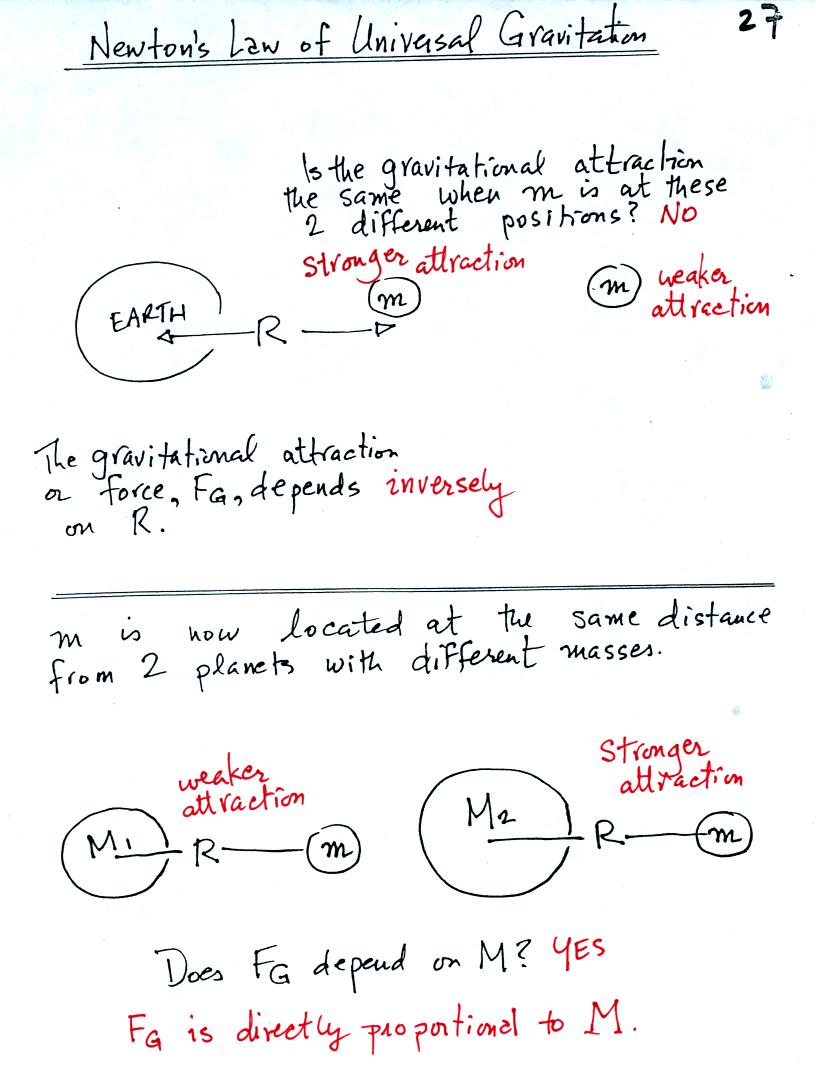
The gravitational attraction between two objects depends first of all
on the distance separating the objects. The gravitational
force becomes weaker the further away the two objects are from each
other. In the bottom
picture above and the top figure below we see that the attractive force
also depends on the masses of the two objects.
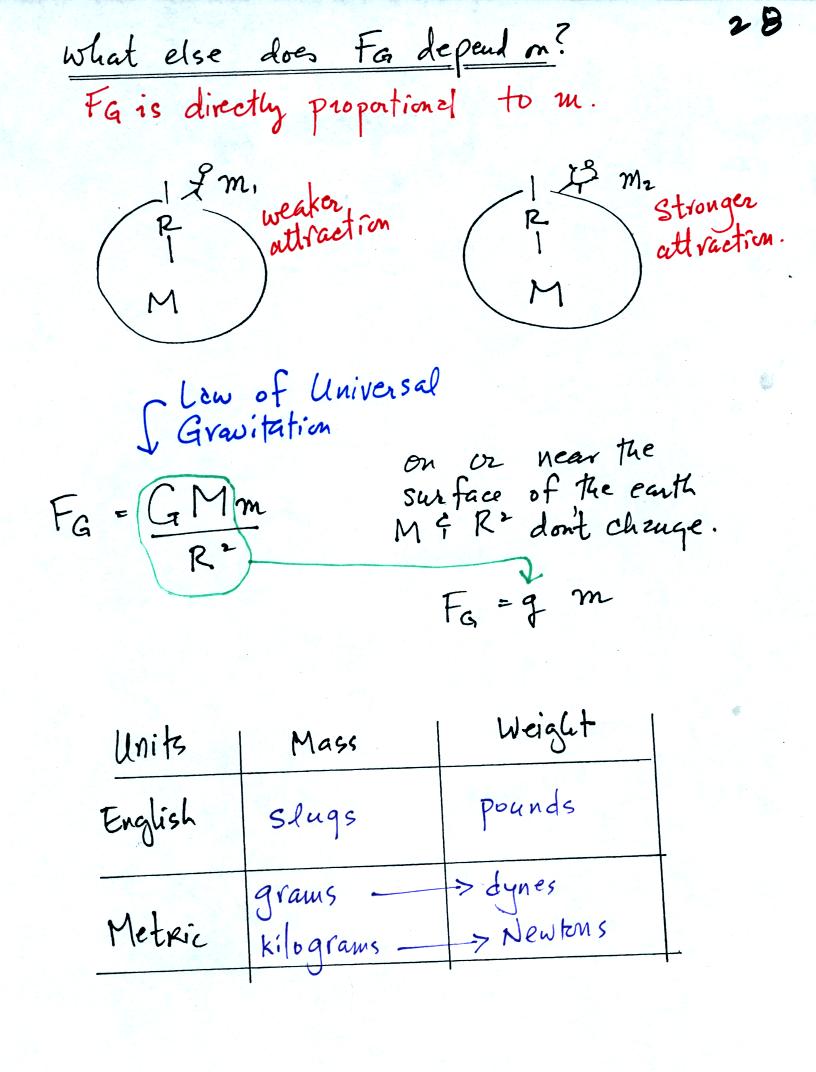
The complete formula is shown in the middle of the page above. G
is a constant. On the surface of the earth G, M, and R don't
change. The gravitational acceleration, g, is just G times Mearth
divided by ( Rearth )2
.
Down at the bottom of the page are the Metric and English units of mass
and weight.














